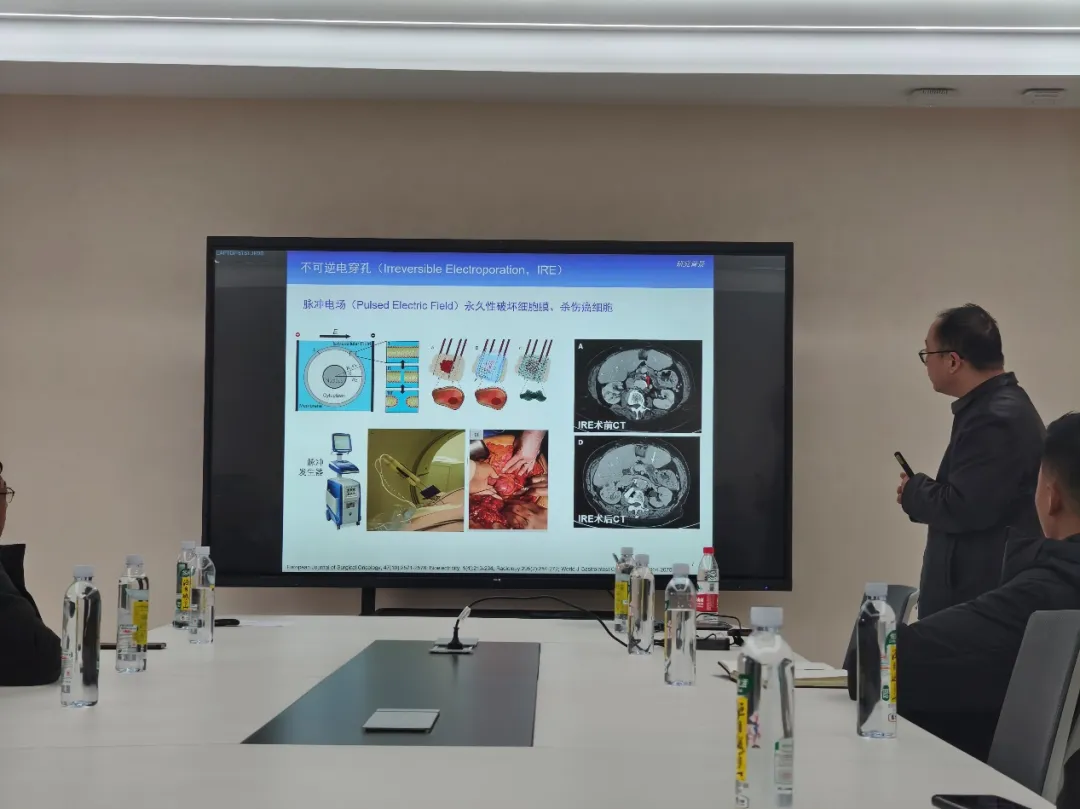
Lecture Review | Biological effects and sensitization strategies for the treatment of impulse electric field ablation of pancreatic cancer
Lecture review
Lecture: Bioeffects and sensitization strategies for the treatment of impulse electric field ablation of pancreatic cancer

Introduction to the speaker
Zhao Jun, professor at the School of Basic Medicine, Huazhong University of Science and Technology, dual-recruitment professor in the Department of Nuclear Medicine of Wuhan Tongji Hospital, and doctoral supervisor. Two National Natural Science Foundations and one Hubei Province "Outstanding Youth" Fund was approved. He serves as a member of the Anticancer Drug Committee of the Chinese Anti-Cancer Association and a member of the Oncology Pharmacology Committee of the Chinese Pharmacological Society. As the first author or corresponding author, he published 14 academic papers in well-known journals such as ACS Nano, Advanced Science, Nature Communications, Biomaterials, Acta Pharmacology Sinica.
Key points of the lecture
Irreversible electroporation (IRE) tumor ablation technology, as an emerging non-thermal physical ablation method, has shown unique advantages in the treatment of solid tumors such as pancreatic cancer, but its clinical application still faces a key bottleneck - the incomplete coverage of lethal doses caused by uneven electric field distribution often results in cell residues in the tumor marginal area. This technical defect directly leads to the high rate of in situ recurrence in clinical treatment. Long-term prognosis data show that the 5-year survival rate of IRE in pancreatic cancer patients has not shown a significant improvement compared with traditional radiotherapy and chemotherapy.
In-depth research has found that surviving tumor cells under the action of sublethal dose electric fields will exhibit unique biological characteristics. These cells activate the DNA damage response pathway under electrical pulse stimulation, manifested as a significant upregulation of the gamma-H2AX protein, which marks the widespread DNA double-strand breaks (DSBs) in the nucleus. Normally, tumor cells deal with this damage through two main repair mechanisms: high-fidelity homologous recombination repair (HDR) and error-prone non-homologous end junction (NHEJ). This discovery provides an important opportunity for combination therapy - targeted blocking of DNA damage repair pathways through ATM/ATR inhibitors can effectively inhibit the proliferation ability of residual tumor cells and induce them toward programmed death.
In order to break through the clinical limitations of IRE technology, Professor Zhao Jun’s team innovatively developed a nanocarrier collaborative treatment system. This breakthrough not only solved the core problem of incomplete IRE ablation, but also opened up a new paradigm in the field of comprehensive tumor treatment. The importance of this study is reflected in multiple dimensions. First, it has realized the precise synergy between physical ablation technology and molecular targeted therapy for the first time. It organically combines the advantages of the two treatment methods through electric field-responsive nanocarriers, providing an innovative template for local-systemic combined treatment of tumors; secondly, this sensitization strategy based on the DNA damage repair mechanism breaks through the limitations of simple superposition of traditional combination therapy and achieves cascade amplification of the therapeutic effect from the molecular level; more importantly, this technical path has broad adaptability, and personalized treatment optimization can be carried out for different tumor types by adjusting the drug combination of nanocarrier load. This innovation not only significantly improves the clinical efficacy of IRE, but also provides new research ideas and treatment strategies for comprehensive treatment of solid tumors, which have an important impact on promoting the development of precise tumor treatment.

- About Us
-
Research Platform
- Major Disease Sample Database
- Innovative Drug Verification And Transformation Platform
- Experimental Animal Center
- Life And Health Future Laboratory
- Biomedical Imaging Platform
- Cell Multi-Omics Platform
- Pathology Technology Platform
- Bioinformatics Research And Application Center
- Jinfeng Pathology Precision Diagnosis Center
- Research Team
- Information Center
- Join Us


 渝公网安备50009802002274
渝公网安备50009802002274